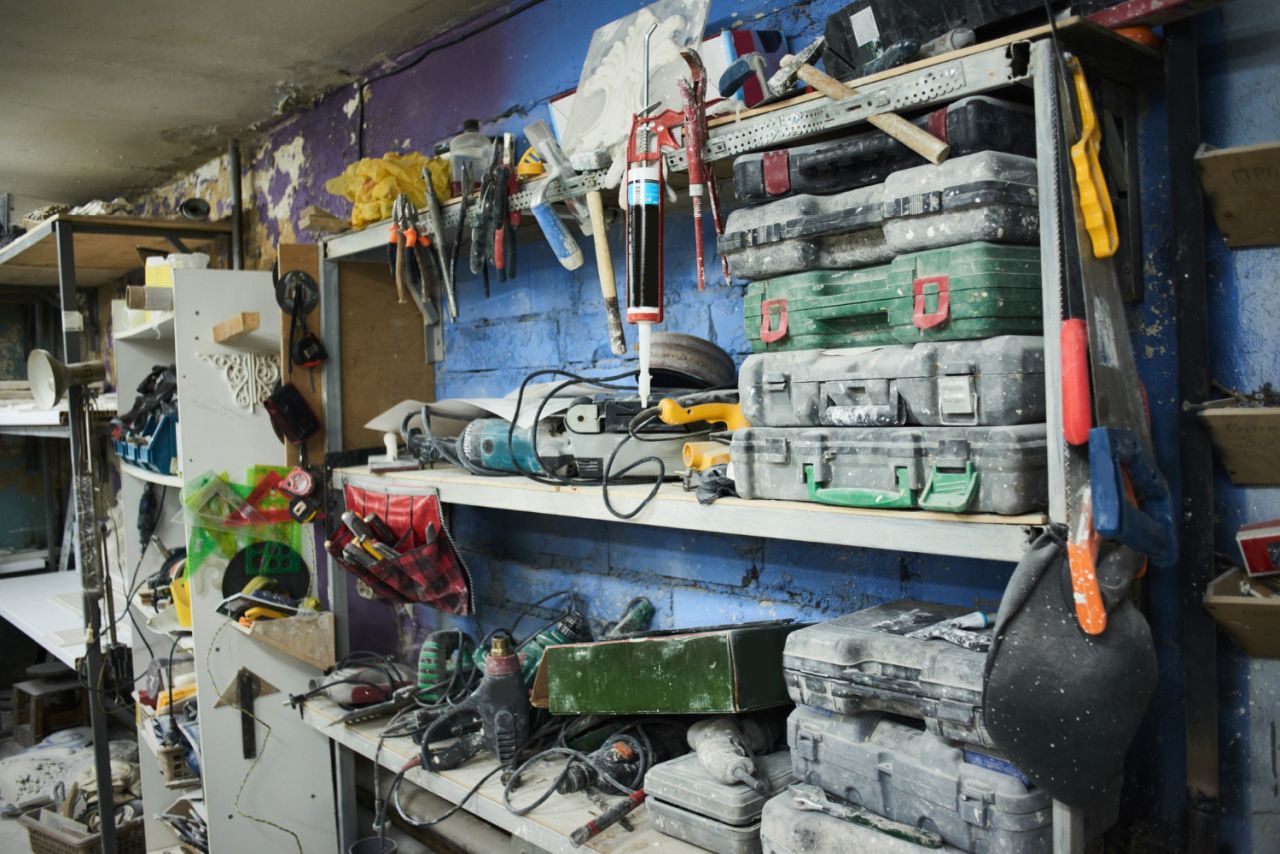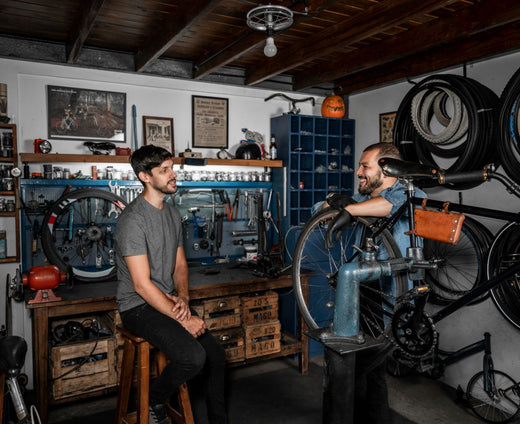Turning your garage into a fully functional workshop can be a rewarding and efficient way to use available space. Whether you are a DIY enthusiast, hobbyist, or professional working with hand tools, larger power tools, or metal tools, having a well-organised workshop can enhance productivity and safety.
This essential guide walks you through the steps to creating a functional workshop in your garage, offering practical tips and garage workshop ideas.
Let's get straight to the point
To turn your garage into a functional workshop, start by assessing the available space, considering the layout, ceiling height, and tool room. Clear out unnecessary items and decide whether to leave parking space or dedicate the entire garage.
Designate task-specific areas (e.g., woodworking, automotive, or metalworking zones) and ensure you have adequate space for tools, workbenches, and power tools.
For efficiency, focus on a sturdy workbench, ample storage, and task lighting.
Set up a reliable electrical system with sufficient outlets and ensure proper ventilation, especially if using dust-producing tools.
Prioritise safety by keeping safety gear accessible. Maximise storage with wall-mounted shelves, pegboards, and toolboxes.
Customise the space with adjustable workstations and personal touches, and test everything for functionality and accessibility.
Proper organisation and lighting are key to creating an efficient, safe, tailored workshop.
Planning and Preparation
Assessing Your Garage Space
The first step in creating a functional workshop in your garage is evaluating the available space. It’s important to consider the size, layout, and what you need to accommodate in your garage workshop.
- Size and Ceiling Height: Measure the floor space and ceiling height to ensure ample space for all your tools and equipment. Larger power tools like table saws or work surfaces require more space, so consider how much room you need to move around.
- Clearing Space: Before bringing in tools, remove unnecessary items such as old furniture, holiday decorations, or unused vehicles to create more room.
- Access and Mobility: Consider whether you need to leave parking space for your car or if the entire garage will be dedicated to your workshop. You’ll need space to move around your workstations safely to use your hand tools or larger power tools.
Designing Your Garage Workshop
Workshop Layout and Size
Once you've assessed the space, the next step is to design your garage workshop. A well-planned layout increases the efficiency of your workspace.
- Task-Specific Areas: Plan distinct areas based on your activities, such as a woodworking area, a metal tools section, and an automotive repair zone. This helps keep tools organised and reduces clutter.
- Work Surfaces and Equipment: Make sure you have sufficient room for work surfaces, whether a wall-mounted workbench for detailed tasks or larger tables for more extensive projects.
- Power Tool Space: Allocate space for larger power tools like a table saw or router table, ensuring that each tool has ample space for operation and safety.
Building and Equipping Your Workshop
Workbenches and Surfaces
A sturdy workbench is a central feature of any functional workshop. Whether you plan to focus on woodworking, metalworking, or any other tasks, the quality of your work surface directly impacts your productivity and safety.
- Types of Workbenches: Choose between adjustable or wall-mounted workbenches. Wall-mounted workbenches can save space for small shops, while larger workshops may benefit from more robust, heavy-duty options.
- Storage Options: A workbench with built-in storage, like drawers or shelves, helps keep hand tools like screwdrivers, drill bits, and pliers organised and within easy reach.
- Task Lighting: Ensure your workbenches have proper lighting, especially when performing intricate tasks. Install task lighting above your work surfaces to provide adequate visibility when using sharp tools or handling small components.
Power and Lighting

Electrical Setup for Your Garage Workshop
Setting up a reliable electrical system is critical in a functional workshop, especially when using larger power tools or dust collection systems. Proper electrical work ensures safety and efficiency.
- Electrical Outlets: Install outlets at strategic locations to power all your tools, including extension cords for portable devices. Extra outlets along the walls can help reduce cable clutter and make everything easily accessible.
- Power Requirements: Check the power requirements for your tools. Larger equipment, such as a table saw or dust collectors, may require dedicated circuits. Be sure your garage’s electrical setup can handle the load.
- Lighting: A well-lit garage workshop is essential. LED lights are energy-efficient and provide good illumination without generating excessive heat. Ensure that the space is well-lit to reduce eye strain and improve safety.
Safety and Ventilation
Ventilation and Safety Measures
A functional garage workshop must prioritise safety and ventilation. This is especially important if you work with materials that produce dust or fumes, such as wood dust, in a woodworking workshop.
- Dust Extraction System: If your woodwork uses materials that generate fine particles, install a dust extraction system to keep the air clean. A dust collector will help prevent the spread of dust throughout the garage, ensuring better air quality and reducing fire hazards.
- Ventilation: Proper airflow is essential to avoid the accumulation of fumes from chemicals or solvents. Install exhaust fans or ventilation systems to circulate fresh air and keep your workshop space comfortable.
- Safety Gear: Keep safety gear easily accessible, including dust masks, safety goggles, and fire extinguishers. Ensure that you have a first aid kit nearby in case of emergencies.
Storage and Organisation
Maximising Garage Storage
You’ll need efficient storage solutions to organise all your tools to create a truly functional space. Proper organisation keeps your workshop tidy and ensures that tools are easy to find when needed.
- Wall Storage: Install pegboards, racks, or shelves on wall studs for your hand tools and metal tools. This frees up floor space and provides easy access to your tools.
- Toolboxes and Chests: Invest in tool chests or toolboxes for smaller items like screws, drill bits, or wrenches. Labelling drawers or compartments can save time and effort when looking for specific tools.
- Shelving Units: Wall-mounted shelving units are ideal for larger equipment, such as extension cords or router tables. Use vertical space to maximise storage in your garage, especially if you have limited floor space.
Garage Workshop Ideas for a Versatile Space
Customising Your Workshop
One of the most rewarding parts of creating a garage workshop is customising the space to suit your needs. Whether you have a small workshop or a larger dedicated space, there are many ways to adapt it for different tasks.
- Create Zones: Establish separate areas for various types of work. For example, have a dedicated woodworking zone with all your hand planes, saws, and routers and a separate area for automotive repairs or metalworking.
- Adjustable Workstations: If space is limited, consider using flexible workstations that can be moved or adjusted as needed. Adjustable lamps can also help maximise your use of space and ensure good lighting for each task.
- Add Personal Touches: To make your workshop more enjoyable, consider adding a chalkboard or dry-erase board to track projects, tasks, or tool inventory.
Final Touches
Putting it All Together
Once you've installed the major components and organised your tools, it's time for the finishing touches. These final steps will help make your functional garage workshop even more efficient.
- Test the Setup: Check that all your tools function correctly and that your electrical setup works as intended. Test the dust extraction system and ensure it properly filters out dust particles.
- Optimise Lighting: Add task lighting above key workstations for maximum visibility. If your workspace is darker, consider installing additional LED lights.
- Ensure Accessibility: Organise and make sure that all your tools are easy to access. This will save you time and frustration during your projects.
Following these steps will transform your garage into a highly functional workshop tailored to your specific needs. Whether you’re working on woodworking, metal tools, or DIY projects, a well-organised garage workshop ensures you’ll have everything you need to do the job efficiently and safely.
Frequently Asked Questions
What’s the First Step in Creating a Functional Workshop in My Garage?
The first step is cleaning and clearing unnecessary items to make space for your tools and equipment.
How Do I Plan the Layout of My Garage Workshop?
Assess the available space, consider the activities you'll be doing, and create distinct areas for tasks such as woodworking, metalworking, or automotive work.
What Type of Workbench Should I Choose for My Garage Workshop?
A sturdy workbench is essential. Depending on your space, you can choose between adjustable or wall-mounted options, with built-in storage to keep tools organised.
How Can I Ensure Good Lighting in My Garage Workshop?
Maximise natural light by utilising windows and installing task lighting above workbenches for precision tasks. Good lighting is crucial for safety and visibility.
What Safety Features Should I Include in My Garage Workshop?
If necessary, install a dust extraction system, ensure proper ventilation, and keep safety gear like goggles, dust masks, and a first aid kit easily accessible.





